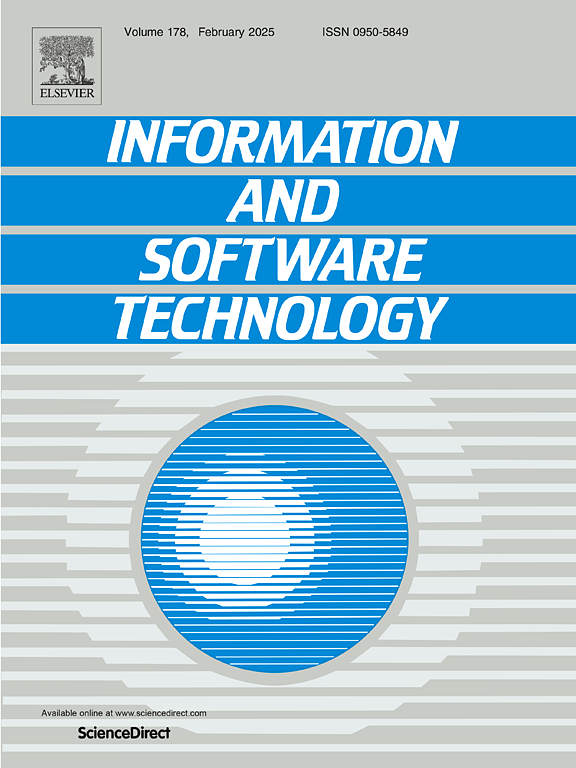Improving bug triage with the bug personalized tossing relationship
IF 3.8
2区 计算机科学
Q2 COMPUTER SCIENCE, INFORMATION SYSTEMS
引用次数: 0
Abstract
Background:
In open-source software projects, the main task of bug triage is accurately assigning bugs to appropriate developers. Statistics indicate that about 50% of bugs are reassigned (also called “tossed”) at least once, greatly extending the time for bug fixing. Research studies have shown that combining historical tossing relationships can significantly improve bug triage performance.
Objective:
The current research on utilizing bug tossing relationships can be mainly divided into two categories: (1) During the reassignment phase, only developers with the highest probability of tossing relationships are selected. (2) Use attribute filtering mechanism to filter and match developers. However, these approaches fail to fully consider the matching degree between developers’ abilities and the knowledge required to fix current bugs. We are attempting to propose an approach to address the above problem.
Approach:
We propose an approach to improve bug triage with the Bug Personalized Tossing Relationship (BPTRM). It uses a tossing transition probability matrix derived from historical tossing paths to help recommend suitable developers for solving bug reports.
Result:
Experimental results from various data sets within Eclipse and Mozilla indicate that BPTRM improves average recommendation performance by at least 14.38% compared to different initial assignment approaches. In addition, compared to baselines, BPTRM improves the average accuracy by 14.66% and shortens the average bug tossing length by 16.19%.
Conclusion:
1. The BPTRM approach, combined with personalized bug tossing relationships, precisely matches developers’ abilities and the knowledge required to fix current bugs. 2. This effectively improves the bug triage’s accuracy and shortens the bug tossing’s length.

求助全文
约1分钟内获得全文
求助全文
来源期刊

Information and Software Technology
工程技术-计算机:软件工程
CiteScore
9.10
自引率
7.70%
发文量
164
审稿时长
9.6 weeks
期刊介绍:
Information and Software Technology is the international archival journal focusing on research and experience that contributes to the improvement of software development practices. The journal''s scope includes methods and techniques to better engineer software and manage its development. Articles submitted for review should have a clear component of software engineering or address ways to improve the engineering and management of software development. Areas covered by the journal include:
• Software management, quality and metrics,
• Software processes,
• Software architecture, modelling, specification, design and programming
• Functional and non-functional software requirements
• Software testing and verification & validation
• Empirical studies of all aspects of engineering and managing software development
Short Communications is a new section dedicated to short papers addressing new ideas, controversial opinions, "Negative" results and much more. Read the Guide for authors for more information.
The journal encourages and welcomes submissions of systematic literature studies (reviews and maps) within the scope of the journal. Information and Software Technology is the premiere outlet for systematic literature studies in software engineering.
 求助内容:
求助内容: 应助结果提醒方式:
应助结果提醒方式:


